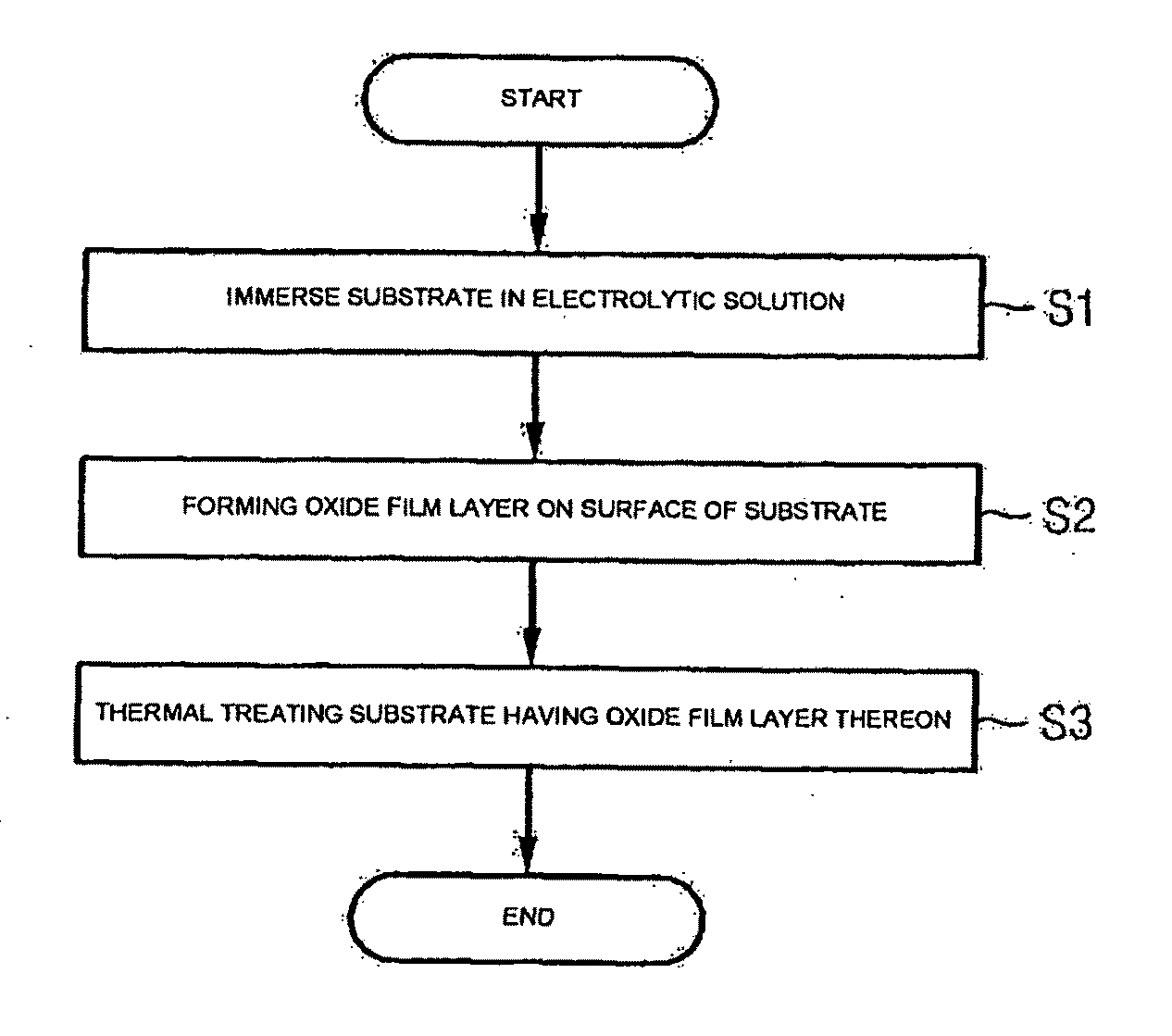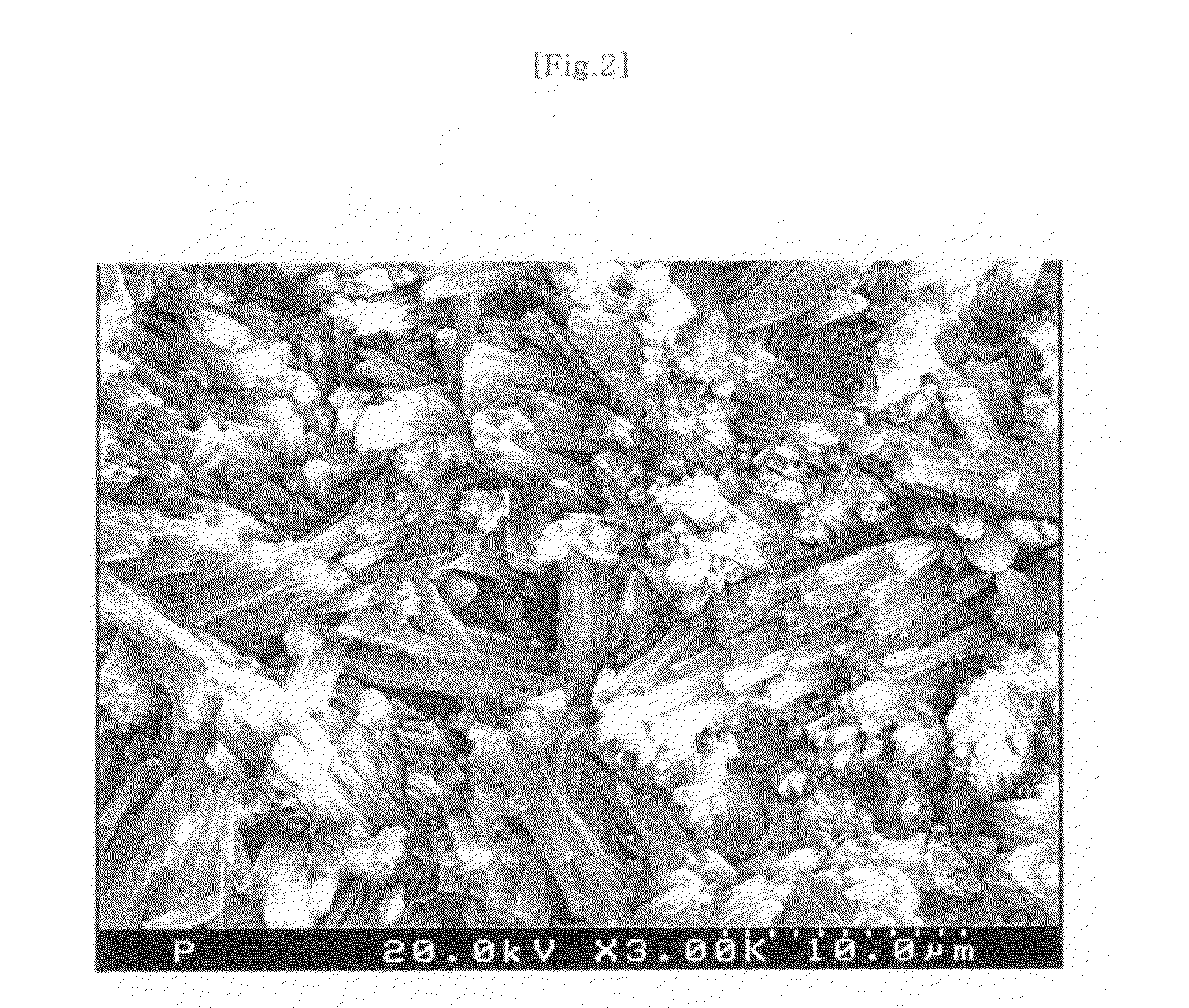Method of fabricating implant with improved surface properties and implant fabricated by the same method
a technology of surface properties and implants, which is applied in the field of fabricating implants and implants by the same method, can solve the problems of affecting the appearance of teeth and bones with a lapse of time, and achieve the effects of accelerating the formation of osseous tissues, excellent biocompatibility, and fine roughness
- Summary
- Abstract
- Description
- Claims
- Application Information
AI Technical Summary
Benefits of technology
Problems solved by technology
Method used
Image
Examples
experimental example 1
[0062]A substrate was prepared by cutting a commonly used pure titanium plate to a thickness of 1 mm in a dimension of 10×10 mm. A surface of the substrate was ground step by step using a sheet of SiC sand paper of #1200, which was then ultrasonic wave washed sequentially in acetone, alcohol and distilled water solution for 15 minutes each. After washing, the substrate was kept after being air dried within an asepsis worktable.
[0063]Thereafter, in order to prepare electrolytic solution including phosphate ion, 2 ml, of orthophosphoric acid solution (H3PO4) of Sigma Co., ltd. was added to 98 ml of distilled water.
[0064]Successively, the electrolytic solution was poured in a Teflon-coated hydrothermal reactor, and the substrate was immersed into the electrolytic solution. Then, the hydrothermal reaction was performed under a pressure of 10 atm at a temperature of 180° C. for 4 hours.
[0065]Then, the substrate was ultrasonic wave washed using the distilled water for 20 minutes, and air ...
experimental example 2
[0066]A substrate subjected to the pretreatment as the Experimental Example 1 was prepared.
[0067]In order to prepare electrolytic solution including phosphate ion and strontium ion, 60 of 85% orthophosphoric acid solution of Sigma Co., ltd., 1.8 g of sodium hydroxide, and 0.6 g of strontium chloride were added to 294 ml of distilled water.
[0068]Successively, the electrolytic solution was poured in a Teflon-coated hydrothermal reactor, and the substrate was immersed into the electrolytic solution. Then, the hydrothermal reaction was performed under a pressure of 10 atm at a temperature of 180° C. for 2 hours.
[0069]Then, the substrate was ultrasonic wave washed using the distilled water for 20 minutes, and air dried for 24 hours. After this, thermal treatment was performed in an electric furnace at a temperature of about 400° C. for about 12 hours, thereby completing the implant.
PUM
| Property | Measurement | Unit |
|---|---|---|
| Temperature | aaaaa | aaaaa |
| Temperature | aaaaa | aaaaa |
| Pressure | aaaaa | aaaaa |
Abstract
Description
Claims
Application Information
 Login to View More
Login to View More - R&D
- Intellectual Property
- Life Sciences
- Materials
- Tech Scout
- Unparalleled Data Quality
- Higher Quality Content
- 60% Fewer Hallucinations
Browse by: Latest US Patents, China's latest patents, Technical Efficacy Thesaurus, Application Domain, Technology Topic, Popular Technical Reports.
© 2025 PatSnap. All rights reserved.Legal|Privacy policy|Modern Slavery Act Transparency Statement|Sitemap|About US| Contact US: help@patsnap.com



